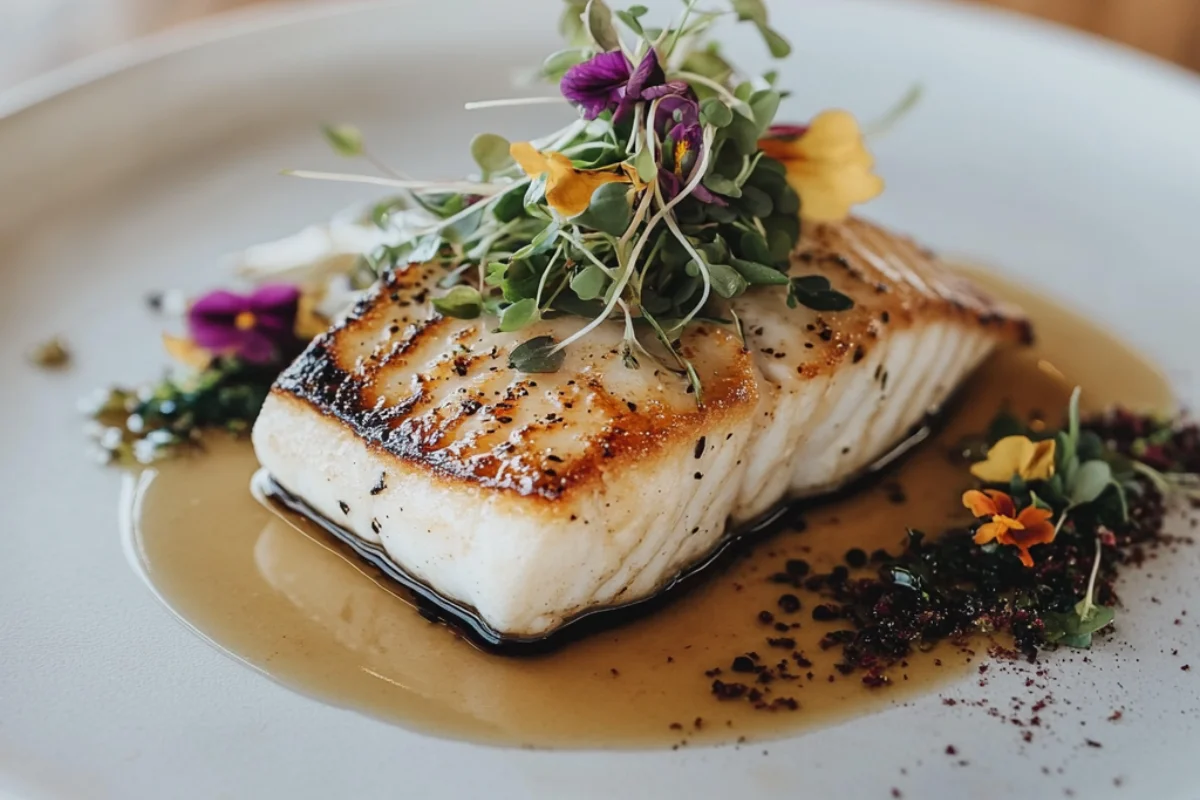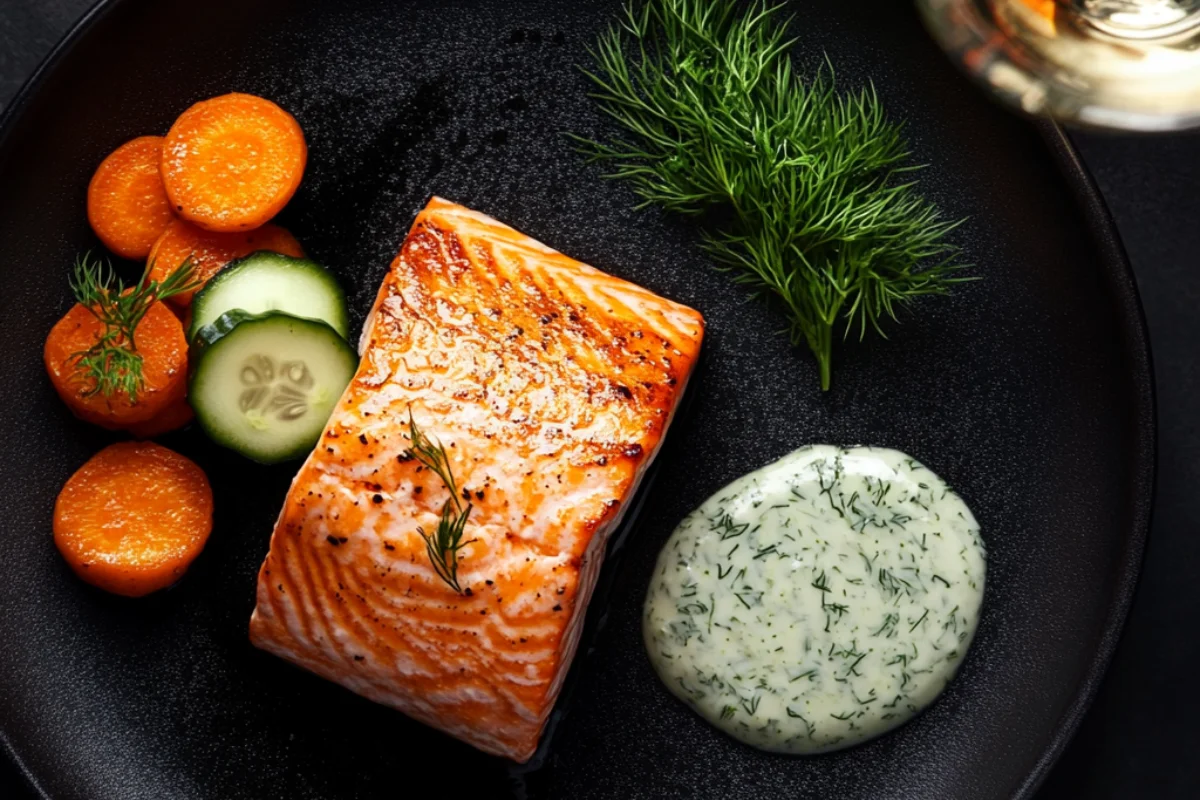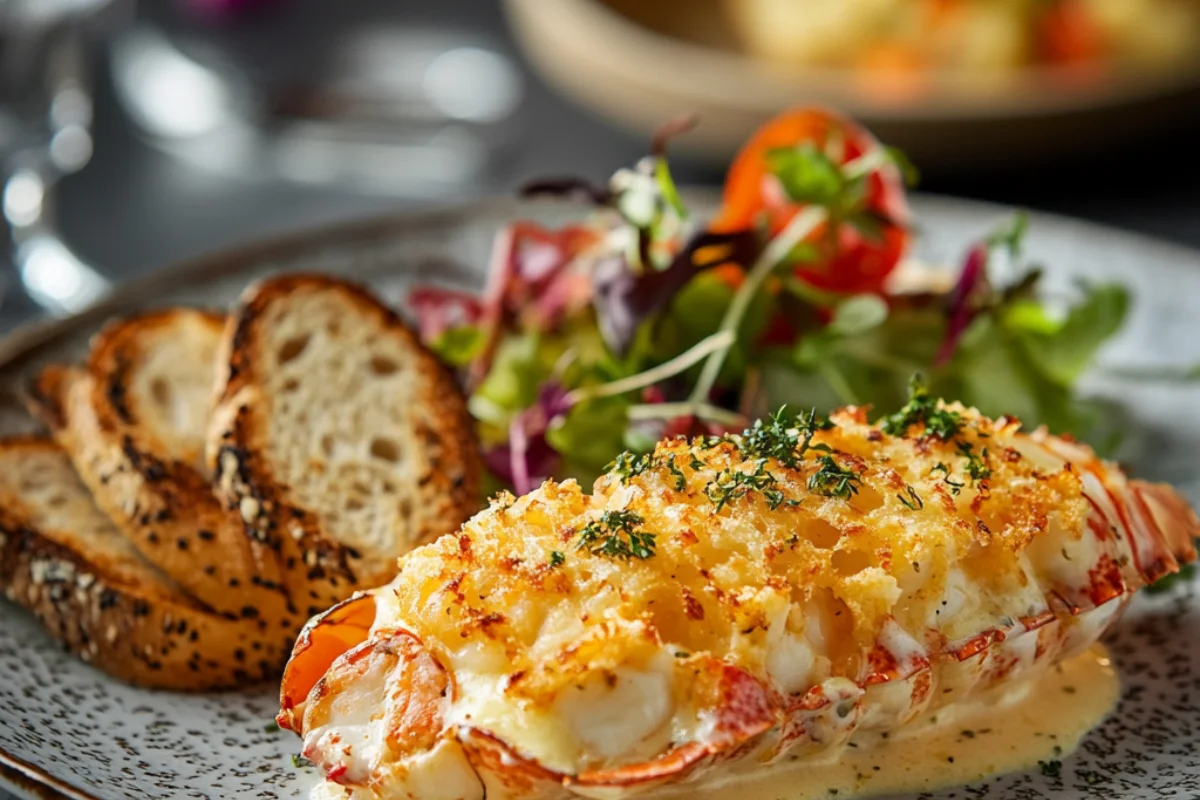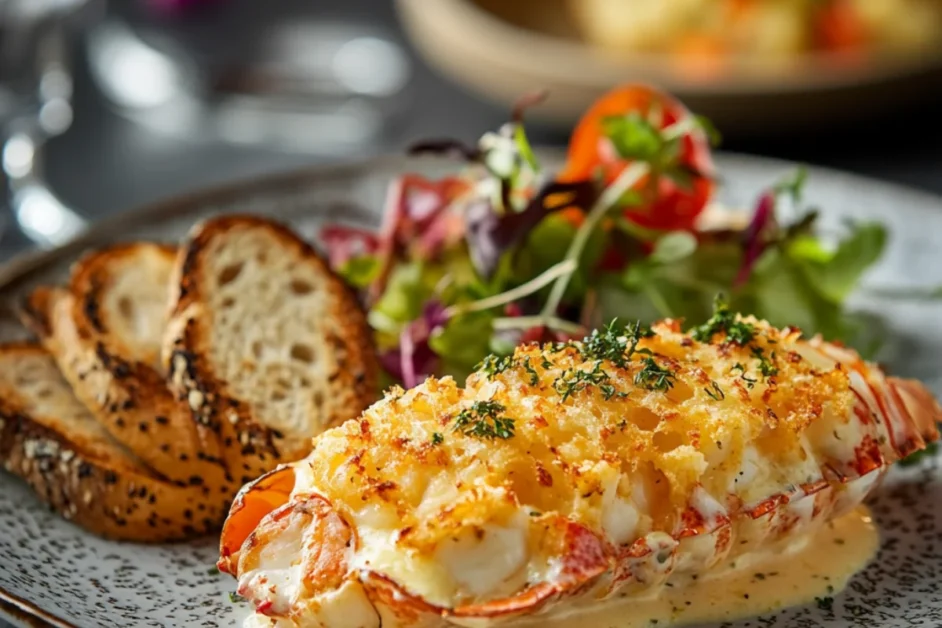What Are Michelin Fish Recipes?
Michelin fish recipes represent the pinnacle of culinary excellence. These recipes are crafted by chefs who have earned the prestigious Michelin stars, a global symbol of extraordinary cooking. Fish, as an ingredient, plays a central role in many of these dishes, highlighting its versatility and delicate flavors. The recipes are not merely about cooking fish but transforming it into an experience that tantalizes the taste buds and celebrates culinary artistry.
The Essence of Michelin-Star Cooking: A Focus on Fish
Michelin-star cooking revolves around precision, creativity, and a deep respect for ingredients. Among these, fish holds a unique place because of its adaptability and the challenges it poses to chefs. Unlike other proteins, fish demands careful handling and preparation to preserve its delicate texture and natural flavors.
Why Fish is a Star Ingredient in Fine Dining
Fish is often considered the jewel of fine dining menus due to its:
- Versatility: Fish can be grilled, steamed, poached, or served raw, making it adaptable to various cuisines.
- Delicate Flavor: Its subtle taste pairs beautifully with bold flavors and refined sauces.
- Nutritional Value: Fish is a rich source of omega-3 fatty acids, lean protein, and essential vitamins, aligning with the modern diner’s preference for healthier options.
Sustainable Sourcing of Fish: A Priority for Michelin Chefs
Sustainability is not just a buzzword; it’s a cornerstone of Michelin-starred cooking. Many Michelin chefs emphasize the use of sustainably sourced fish to reduce the impact on marine ecosystems.
- Traceability: Chefs ensure the fish comes from reputable suppliers who prioritize ethical fishing practices.
- Seasonality: Using fish that are abundant in specific seasons prevents overfishing and ensures fresher flavors.
- Zero Waste: Michelin kitchens often use every part of the fish to minimize waste and honor the ingredient.
The Importance of Technique in Elevating Fish Dishes
When it comes to fish, technique can make or break the dish. Michelin chefs are masters of techniques like:
- Sous-vide Cooking: Ensures the fish is cooked evenly while retaining moisture.
- Curing and Smoking: Adds depth and complexity to the flavor.
- Precision Cooking: Achieving the perfect sear, crust, or texture requires skill and experience.
Michelin vs. Everyday Fish Recipes: Key Differences
While a home-cooked fish dish may focus on simplicity and quick preparation, Michelin fish recipes elevate the experience through a meticulous approach that prioritizes quality, creativity, and visual appeal.
Freshness and Quality: A Non-Negotiable Factor
In Michelin kitchens, freshness is paramount. Chefs go to great lengths to source fish that is:
- Caught the Same Day: Ensures the fish retains its natural sweetness and texture.
- Handled with Care: From the fishing boat to the kitchen, the fish is stored at optimal temperatures to preserve its integrity.
- Inspected Thoroughly: Every fish is examined for signs of freshness, such as clear eyes, firm flesh, and a clean aroma.
Unique Ingredients and Flavor Pairings in Michelin Fish Recipes
Michelin chefs have a flair for pairing fish with unexpected flavors and ingredients that amplify its natural taste.
Use of Global Influences in Michelin Fish Dishes
Michelin recipes often incorporate elements from international cuisines:
- Japanese Influence: Miso-marinated cod or sashimi-grade tuna with soy and wasabi.
- Mediterranean Flair: Grilled seabass with olive tapenade or saffron-infused sauces.
- Nordic Touches: Pickled herring or smoked salmon paired with dill and horseradish.
These global influences not only enhance the flavor but also bring a touch of cultural storytelling to the dish.
Minimalism Meets Complexity in Presentation
Presentation is an art form in Michelin kitchens. Fish dishes are designed to:
- Showcase the natural beauty of the fish, often with minimalist plating.
- Incorporate elements like edible flowers, microgreens, and precisely cut vegetables.
- Balance color, texture, and height on the plate to create a visual masterpiece.
Iconic Michelin Fish Recipes You Can Try at Home
If you’ve ever wondered how to replicate Michelin-style fish recipes in your kitchen, you’re in for a treat. These dishes bring the elegance and sophistication of fine dining to your table, all while focusing on fresh ingredients, refined techniques, and beautiful presentation. Below, we explore some of the most popular recipes and techniques, along with expert tips to help you achieve that Michelin-star quality.
Recipe 1: Pan-Seared Sea Bass with Lemon Beurre Blanc

Ingredients and Step-by-Step Guide
This dish highlights the simplicity and sophistication of sea bass, perfectly paired with a tangy, buttery lemon beurre blanc sauce. Here’s how you can recreate it:
Ingredients:
- Sea bass fillets (2 pieces, skin-on)
- Salt and freshly cracked black pepper
- 2 tablespoons olive oil
- 1 tablespoon butter
- Lemon beurre blanc sauce:
- 1 small shallot, finely chopped
- 1/2 cup dry white wine
- 1/4 cup heavy cream
- 1/2 cup unsalted butter, cold and cubed
- Juice of 1 lemon
- Salt to taste
Instructions:
- Prepare the Sea Bass:
- Pat the fillets dry and season both sides with salt and pepper.
- Heat olive oil in a non-stick skillet over medium-high heat. Place the sea bass skin-side down and cook for 4-5 minutes until the skin is crispy. Flip and cook for another 2 minutes.
- Make the Lemon Beurre Blanc:
- In a small saucepan, sauté shallots in white wine until reduced by half.
- Add the cream and simmer for 1 minute.
- Gradually whisk in cold butter until the sauce is smooth and emulsified.
- Stir in lemon juice and season with salt.
- Combine:
- Serve the sea bass with the sauce drizzled over the top.
Presentation Tips for a Michelin Look
- Plate the sea bass on a swirl of beurre blanc sauce.
- Garnish with microgreens, lemon zest, or edible flowers for visual appeal.
- Add a side of colorful seasonal vegetables, such as blanched asparagus or roasted heirloom carrots, to complement the dish.
Recipe 2: Sous Vide Salmon with Dill and Cucumber Sauce

Mastering the Sous Vide Technique
Sous vide cooking ensures perfectly cooked salmon with a buttery texture every time. Here’s how to master this technique:
Ingredients:
- 2 salmon fillets (skinless)
- Salt and freshly ground black pepper
- 1 tablespoon olive oil
- Fresh dill sprigs
- Lemon slices
Instructions:
- Preheat the Sous Vide Machine:
- Set the temperature to 125°F (52°C) for medium-rare salmon.
- Prepare the Fillets:
- Season the salmon with salt and pepper, place dill and lemon slices on top, and vacuum-seal the fillets in a bag.
- Cook:
- Submerge the bagged salmon into the water bath and cook for 45 minutes.
- Sear for Texture:
- Heat a skillet with olive oil and quickly sear the salmon for 30 seconds on each side for a golden crust.
Pairing Ideas: Wines and Side Dishes
- Wine: A crisp Sauvignon Blanc or a lightly oaked Chardonnay pairs beautifully with salmon.
- Sides: Serve with dill and cucumber sauce, made by blending Greek yogurt, cucumber, dill, and a squeeze of lemon. Complement the dish with a side of buttery mashed potatoes or roasted baby carrots.
Recipe 3: Lobster Thermidor – A Classic Refined

Historical Significance of Lobster in Fine Dining
Lobster has long been a symbol of luxury, appearing on the menus of the most prestigious restaurants. Lobster Thermidor, a creamy, gratin-style dish, became popular in French fine dining during the late 19th century. Its rich, indulgent flavors and elegant presentation make it a quintessential Michelin recipe.
Perfecting the Creamy Sauce and Gratin
Ingredients:
- 1 whole cooked lobster (split lengthwise, meat removed)
- 2 tablespoons butter
- 1 small shallot, finely chopped
- 1/4 cup white wine
- 1/2 cup heavy cream
- 1/4 cup Gruyère cheese, grated
- 1 teaspoon Dijon mustard
- Salt and pepper to taste
- Breadcrumbs for topping
Instructions:
- Prepare the Sauce:
- Sauté shallots in butter, deglaze with white wine, and reduce.
- Add cream, Dijon mustard, and cheese, stirring until thickened.
- Stuff the Lobster:
- Mix the lobster meat with the sauce, spoon it back into the shells, and sprinkle with breadcrumbs.
- Broil:
- Broil the lobster until golden and bubbly.
Alternatives to Lobster for a Budget-Friendly Version
- Replace lobster with large prawns or crab meat to create a more affordable yet equally indulgent dish.
- Substitute Gruyère with Parmesan or Cheddar for a simpler gratin topping.
How Michelin Chefs Handle Regional Fish Like Halibut and Cod
Michelin chefs often experiment with local and seasonal fish to create dishes that celebrate regional flavors. Here are two standout examples:
Halibut with Truffle Foam: A Step Beyond Traditional
Key Elements:
- Halibut fillets are pan-seared and served with a light truffle foam made from truffle oil, cream, and a hint of Parmesan.
- The dish is garnished with wild mushrooms and drizzled with truffle oil for an elevated flavor profile.
Miso-Marinated Black Cod: Japanese Influence in Fine Dining
This iconic dish, popularized by Michelin-starred restaurants, brings together Japanese and modern culinary techniques.
Ingredients:
- Black cod fillets
- Miso paste
- Mirin
- Sake
- Sugar
Method:
- Marinate the fillets in a mixture of miso paste, mirin, sake, and sugar for 24 hours.
- Broil the fish until caramelized and serve with pickled vegetables and steamed rice.
Tips to Recreate Michelin Fish Recipes at Home
Recreating Michelin fish recipes at home may sound intimidating, but with the right approach, techniques, and tools, you can bring the magic of a fine dining experience to your own kitchen. This guide offers practical tips and insights to help you master fish dishes that rival those served at Michelin-starred restaurants.
Choosing the Freshest Fish: What to Look For
The quality of your dish begins with the freshness of your fish. Michelin-level dishes rely on fish that is impeccably fresh, and knowing what to look for ensures you’re starting with the best possible ingredient.
Local Markets vs. Specialty Stores: Where to Buy Your Fish
- Local Fish Markets: Ideal for purchasing freshly caught fish directly from the source. Look for reputable vendors who prioritize sustainability and can provide detailed information about the fish’s origin.
- Specialty Stores: These stores often stock high-quality, exotic fish and seafood that might not be available at local markets. For Michelin-style recipes, they may also offer items like sushi-grade fish or rare species.
- Online Suppliers: Many Michelin-inspired kitchens rely on online fishmongers that ship sustainably sourced fish overnight to ensure maximum freshness.
Signs of Fresh Fish
- Appearance: The flesh should be firm and glistening, not dull or dry. For whole fish, check for clear eyes and shiny scales.
- Smell: Fresh fish has a mild ocean scent. Avoid fish with a strong, “fishy” odor.
- Touch: Press gently on the flesh; it should bounce back rather than leave an indentation.
Mastering Basic Cooking Techniques for Fish
Perfectly cooked fish requires an understanding of essential techniques that balance heat, timing, and texture.
Pan-Searing, Grilling, and Baking: The Essentials
- Pan-Searing: This technique creates a beautiful golden crust while keeping the interior moist. Use a hot, non-stick pan with oil and ensure the fish is dry before placing it in the pan.
- Grilling: Ideal for robust fish like salmon or swordfish. Use a grill with clean, oiled grates to prevent sticking, and cook on medium heat to avoid drying out the fish.
- Baking: A gentle method that works well for delicate fish like cod or halibut. Bake in parchment paper (“en papillote”) with herbs, vegetables, and a splash of white wine for extra flavor.
How to Avoid Overcooking: Maintaining Tenderness
- Use a thermometer: Fish is perfectly cooked when it reaches an internal temperature of 125-130°F (52-54°C) for a moist, flaky texture.
- Rest after cooking: Allow the fish to rest for 2-3 minutes to redistribute juices before serving.
- Cook just until opaque: Keep a close eye on the fish, as overcooking can lead to dryness.
The Role of Sauces and Garnishes in Michelin Dishes
In Michelin-starred fish recipes, sauces and garnishes are not afterthoughts—they are integral to the dish’s flavor and presentation.
Classic French Sauces for Fish: Beurre Blanc, Hollandaise
- Beurre Blanc: A classic sauce made with white wine, shallots, butter, and lemon juice. Its tangy, buttery flavor complements delicate fish like sole or sea bass.
- Hollandaise: Made from egg yolks, butter, and lemon, this creamy sauce pairs beautifully with grilled or poached fish.
Tips for Perfect Sauces:
- Use high-quality butter and fresh ingredients.
- Strain sauces for a silky-smooth consistency.
- Add fresh herbs like tarragon or dill to elevate flavors.
Garnishing Like a Pro: Microgreens, Edible Flowers, and More
- Microgreens: Add a pop of color and a touch of freshness to the plate. Common options include pea shoots, arugula, or radish greens.
- Edible Flowers: Enhance both the appearance and flavor of the dish. Popular choices are nasturtiums, violets, and pansies.
- Crispy Elements: Use fried fish skin, toasted nuts, or crispy breadcrumbs to provide contrast in texture.
Plating and Presentation Secrets for Michelin-Level Fish Dishes
Presentation is an art form in Michelin cooking. Follow these tips to ensure your fish dishes look as good as they taste.
Using Geometric Shapes and Negative Space
- Geometric Shapes: Arrange components in circular, triangular, or linear patterns for a modern aesthetic.
- Negative Space: Avoid overcrowding the plate. Leaving space around the food draws attention to the main ingredients.
Incorporating Colors and Textures to Elevate Aesthetic Appeal
- Colors: Use vibrant vegetables, sauces, or garnishes to create visual contrast. For example, pair a white fish with a bright green pea purée or a red beet reduction.
- Textures: Combine soft, crispy, and creamy elements to create an engaging sensory experience.
Tools and Equipment for Home Chefs
Investing in the right tools ensures precision and efficiency when preparing Michelin-inspired fish recipes.
Investing in Fish-Specific Knives and Cookware
- Knives: A high-quality fillet knife is essential for clean, precise cuts. Look for flexible blades that make deboning and filleting easier.
- Cookware: Non-stick pans are perfect for searing fish, while cast-iron skillets retain heat for even cooking. A fish spatula helps with delicate flipping.
Utilizing Plating Tools Like Ring Molds and Tweezers
- Ring Molds: Create uniform shapes for rice, mashed potatoes, or vegetables, adding elegance to the plate.
- Tweezers: Precision tools for placing microgreens, edible flowers, and other small garnishes.
Conclusion
Mastering Michelin fish recipes at home may seem like an ambitious goal, but with the right approach, tools, and techniques, it is entirely achievable. The key lies in focusing on three essential pillars: freshness, precision, and presentation. By sourcing high-quality fish, employing professional cooking methods, and embracing creativity in plating, you can elevate simple fish dishes to fine dining masterpieces.
Whether you’re recreating iconic dishes like Lobster Thermidor or experimenting with modern takes such as Miso-Marinated Black Cod, each recipe offers an opportunity to showcase your culinary skills. Additionally, understanding the importance of sauces, garnishes, and visual appeal will add a touch of sophistication that mirrors Michelin-starred kitchens.
Lastly, don’t forget to invest in the right tools, embrace sustainable practices, and continuously refine your techniques. Cooking like a Michelin chef is as much about passion and precision as it is about respecting the ingredients and the art of cuisine.
With patience and practice, you can transform your home cooking into an unforgettable dining experience. Ready to try your hand at creating Michelin-level fish recipes? The journey starts in your kitchen!

